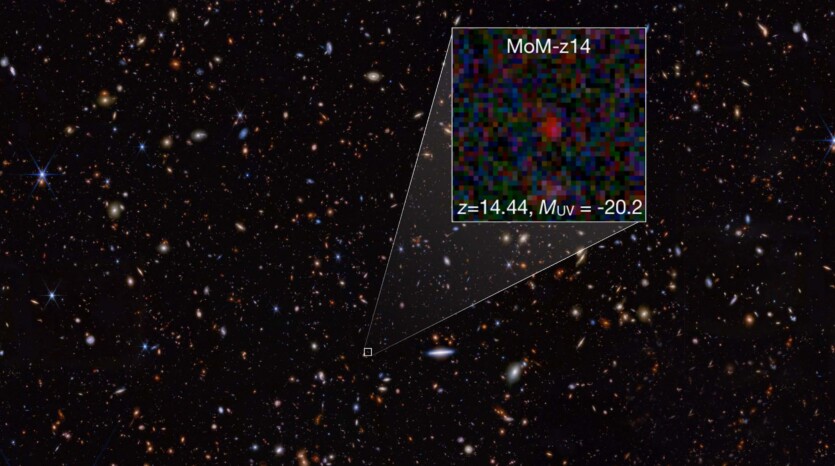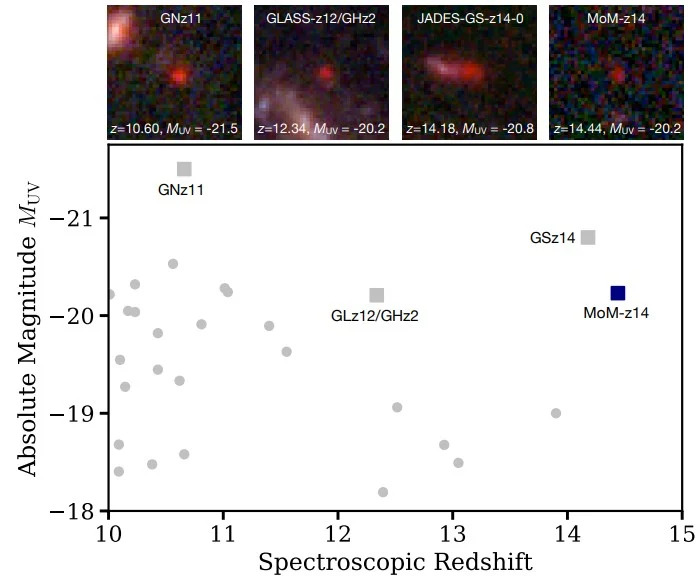
Astronomers using the «James Webb» telescope have discovered the most distant galaxy known, formed 280 million years after the Big Bang.
The galaxy was named MoM-z14 and was discovered by the Mirage spectroscopic survey, which is designed to search for galaxies with a high redshift. The discovery was made by astrophysicists from the MIT Kavli Institute for Astrophysics and Space Studies.
It is noted that the near-galactic environment turned out to be ionized, which was not predicted by the modeling results. «James Webb» allows astronomers to find galaxies with a red shift from 10 to 16 and 20, which was almost impossible before.
The «Hubble» telescope is capable of detecting objects in the near infrared, but its mirror size is only 2.4 meters. It managed to detect only one galaxy, which was formed 500 million years after the Big Bang.
The spectroscopic redshift of MoM-z14 is 14.44, which means that it existed 280 million years after the Big Bang. The researchers admit that they expected to see a completely few galaxies with such a large red shift.

Observations have shown that most of the incoming light from MoM-z14 belongs to stars, not the galactic nucleus. MoM-z14 probably contains several bright supermassive stars. Astronomers have found a high ratio of nitrogen to carbon. The chemical composition of MoM-z14 is similar to globular clusters in the Milky Way. Since «James Webb» discovered a number of ancient bright galaxies, a class of objects that are powerful emitters of nitrogen, including small luminous red dots, has become apparent. MoM-z14 may turn out to be one of the most nitrogen-rich objects known to astronomers.
The upper limit of the stellar mass of the galaxy is about 108 of the Sun’s mass, making it look like a dwarf galaxy. At the same time, the space around the galaxy is apparently partially ionized by the flux of ultraviolet radiation emanating from it. This may mean an earlier beginning of the Reionization epoch, which is unusual, since the modeling results predicted a completely neutral environment during this period.
https://itc.ua/en/news/scientists-find-the-smallest-galaxy-in-the-universe/
The results of the study are published on the preprints website ArXiv
Source: Universe Today; ScienceAlert

Spelling error report
The following text will be sent to our editors: